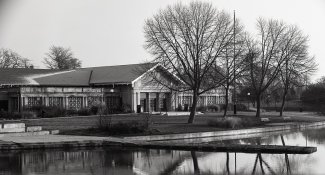"Expose for the shadows, develop for the highlights" is the Zone System for sheet film in a nutshell. For roll film users, I say, "Expose for the shadows and use paper grade changes for the highlights." This takes care of all but the contrastiest situations.
So, in my opinion, a modified Zone System is entirely relevant to and useable with roll film.
Now, to the OP's original question: The big advantage of a spotmeter is that you can use it to deal with two very important shortcomings of averaging meters, 1) making sure the shadows have enough exposure and 2) measuring the subject brightness range. This latter is more important when one has control of development for each photograph, enabling one to develop each image to the contrast so it prints as desired. With roll film, this is less of an issue, and contrast is usually dealt with by changing paper grades at the printing stage.
The first issue, shadow placement, however, is still of prime importance. So, if I were you, I'd read up on enough of the Zone System to understand shadow placement and the associated film speed test (easy to do with roll film, BTW, a lot easier than with sheet film

). In essence, however, all you need to do to start is measure the shadows that you want to contain detail (i.e., not just be featureless black) and then give 2 stops less exposure than the meter indicates. This will get you going till you become more sophisticated with placing values.
If you want to get the most out of your spot meter, then do use it to measure important shadows and place them properly. The problem with averaging, as mentioned above, is that if the subject is very contrasty, an average exposure of high and low readings will severely underexpose the shadows. Placing the shadows ensures that this does not happen. With my method, you don't even have to bother metering the higher values (but you certainly can, for curiosity's and learning's sake).
Somewhere here I have expounded a "Zone System for roll film users" that eliminates the need for a lot of different development times. It standardizes on a less-than-normal-contrast development and paper-grade changes to deal with contrast. Maybe a search on my name will turn it up. If not, and you are interested, PM me and I'll send it to you.
Best,
Doremus Scudder
www.DoremusScudder.com




 ). In essence, however, all you need to do to start is measure the shadows that you want to contain detail (i.e., not just be featureless black) and then give 2 stops less exposure than the meter indicates. This will get you going till you become more sophisticated with placing values.
). In essence, however, all you need to do to start is measure the shadows that you want to contain detail (i.e., not just be featureless black) and then give 2 stops less exposure than the meter indicates. This will get you going till you become more sophisticated with placing values. 